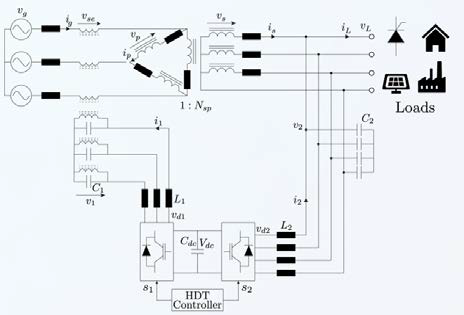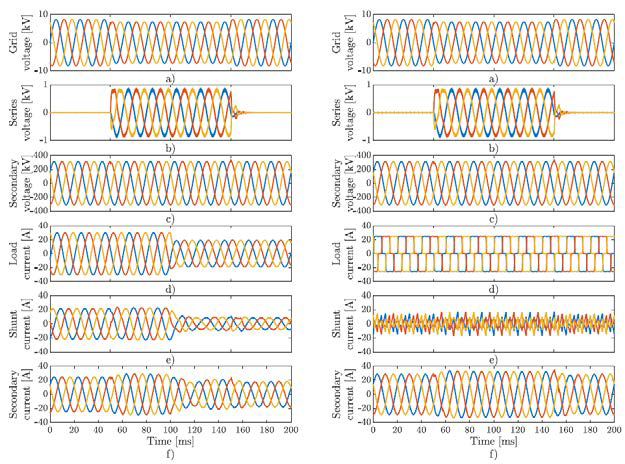Control of a Hybrid Transformer to Improve the Power Quality of a Distribution Network
Alvaro Carreno
supervisor: Mariusz Malinowski
Hybrid Distribution Transformer (HDT) combines in a single-solution a power converter and a conventional Low-Frequency Transformer (LFT). The most recurrent configuration consists of shunt converter supplied by the Auxiliary Winding (AW) of the LFT, and a series converter connected in series to the low-voltage grid. An alternative to this configuration consists in connecting the series converter into the medium-voltage grid utilizing a Coupling-Transformer (CT). Despite being able to mitigate grid current harmonics and provide load voltage regulation, in both configurations the load harmonics circulate through the LFT, which attempts against its lifetime. Therefore, in this work an HDT composed of a series converter connected to the primary-side through CTs, and a shunt converter directly connected to the secondary-side is presented, focused in extending the LFT lifetime.

Both converters are controlled utilizing discrete-time linear quadratic regulators, which include resonant terms to be able to compensate the main load current and grid voltage harmonics. The resonance of both output filters can make their operation unstable, therefore a state-feedback controller is utilized to provide proper dampening. The states are obtained through a state observer. The HDT is able to improve the grid power quality, specially improving the currents that flows through the LFT windings. The HDT is able to operate under different conditions, such as a supplying linear and nonlinear loads, unbalanced grid and load, and polluted grid. The series stage of the HT can be controlled in order to control the LFT flux, which can mitigate the generation of inrush currents.
